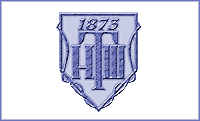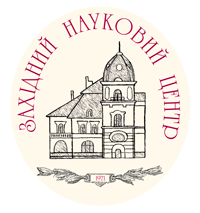Alina YATSKO1, Zinoviya SHPYRKA2
1Secondary school of Lviv, No. 97 Mykolaychuka Str., 18, 79059 Lviv, Ukraine e-mail: alinalinonka@gmail.com
2 Ivan Franko National University of Lviv, Kyryla i Mefodia Str., 6, 79005 Lviv, Ukraine e-mail: zinoviya.shpyrka@lnu.edu.ua
DOI: https://doi.org/10.37827/ntsh.chem.2025.78.279
THE ROLE OF STEM APPOROACHES IN DEVELOPING KEY COMPEYTENCIES OF SЕCONDARY EDUCATION STUDENTS
The theoretical, methodological, and practical aspects of implementing STEM approaches in chemistry education have been analyzed, highlighting the importance of developing STEM education in today's educational landscape. Educational projects such as “EcoCosmetics” and “Create a Painting by Yourself” have been designed and piloted. These projects seek to integrate chemical knowledge with students' practical and creative activities. During the implementation of the “EcoCosmetics” project, students researched the composition of cosmetic products and examined their effects on health. They learned about the methods for producing natural skincare cosmetics using nanomaterials and created their own cosmetic products, such as balms, creams, masks, soaps, or deodorants, using safe and natural ingredients. In the “Create a Painting with Your Own Hands” project, students independently produced pigments from inorganic substances and learned about binding components. They then used the pigments they had created to make paints, which they used to produce original artworks. Methodological materials titled “Experiments in Food Chemistry” and “Laboratory Workbook in Food Chemistry” have been developed for teachers, instructors, and students in secondary and higher education institutions. The effectiveness of applying STEM approaches in chemistry education in terms of developing key competencies among secondary school students has been evaluated. Based on the results of the conducted study, it is concluded that the STEM approach is not only an effective method of organizing the educational process, but also a powerful tool for developing students' key competencies. It enables the comprehensive implementation of STEM education principles and promotes the popularization of natural sciences among school students. The integration of STEM-focused learning transforms educational institutions into innovative spaces that encourage research, creativity and engineering thinking.
Keywords: secondary school students, STEM approach, chemistry, cosmetics, painting.
References:
-
1. Concept for the Development of STEM Education by 2027. URL:
(https://mon.gov.ua/ua/news/uryad-uhvaliv-koncepciyu-rozvitku-stem-osviti-do-2027-roku).
2. Lavi R., Tal M., Dori Y. J. Perceptions of STEM alumni and students on developing 21st century skills through
methods of teaching and learning. Studies in Educational Evaluation, 2021. Vol. 70. 101002.
https://doi.org/10.1016/j.stueduc.2021.101002.
3. Voronkova V., Kyvliuk O., Nikitenko V., Oleksenko R. “STEM-education” as a factor in the development of
“SMART-society”: forming of “STEM-competence”. Humanitarian Bulletin of the ZDIA, 2018. 72. P. 114–124.
https://doi.org/10.30839/2072-7941.2018.130597.
4. Balyk N. R., Shmyger G. P. Approaches and features of contemporary STEM education. Scientific Journal of
Physics and Mathematics Education. 2017. Vol. 2(12). P. 26–30 (in Ukrainian).
5. Besedin B., Smolyakov O. Educational Technologies of the 21st Century: STEM Education. Humanization of the
Educational Process. 2018. Vol. 1(87). P. 76–84 (in Ukrainian).
6. Babiychuk S. STEM Education in the USA: Challenges and Opportunities. Volyn Pedagogical Journal, 2018. Vol.
1(8). P. 12–17 (in Ukrainian).
7. Globa O. Introducing new technologies into the educational process in teaching chemistry and biology at
educational institutions. Scientific Bulletin of the Izmail Humanitarian University. Coll. of Scientific Papers.
Izmail. 2021. Vol. 54. Series: Pedagogical Sciences. P. 73–81. (in Ukrainian).
https://doi.org/10.31909/26168812.21-(56)-8.
8. Kuzmenko O. The essence and directions of STEM education. Scientific Notes: Problems of the Methodology of
Physical and Mathematical Education. KDPU, 2016. Vol. 3(9). P. 188–190 (in Ukrainian).
9. Polikhun N. I., Slipukhina I. A., Chernetsky I. S. Pedagogical technology in STEM as a means of reforming
Ukraine's educational system. Education and the development of gifted individuals. 2017. No. 3. P. 5‒9 (in
Ukrainian).
10. Patrikeyeva O. O. The significance of implementing STEM education in Ukraine. Information Collection for
School Principals and Kindergarten Heads. Kyiv: Osvita Ukrainy, 2015. Vol. 17–18 (41). P. 53–57 (in Ukrainian).
11. Stryzhak O. Ye., Slipukhina I. A., Polisun N. I., Chernetsky I. S. Basic definitions of STEM education.
Information Technologies and Teaching Aids. 2017. Vol. 62(6). Р. 16‒32 (in Ukrainian).
https://doi.org/10.33407/itlt.v62i6.1753.
12. Jancarczyk D. STEM as a key to success in the engineering education. Modern information technologies and
innovative teaching methods: experiences, trends, and prospects. Proceedings of the II International Scientific
and Practical Internet Conference. Ternopil: TNPU named after V. Hnatyuk. P. 31–32.
http://dspace.tnpu.edu.ua/handle/123456789/15218.
13. Borrego M., Henderson C. Increasing the Use of Evidence-Based Teaching in STEM Higher Education: A Comparison
of Eight Change Strategies. J. Engineering Education, 2014. Vol. 103. Р. 220‒252.
https://doi.org/10.1002/jee.20040.
14. Didyk A., Shapoval Ya., Sergeev O. Introduction of STEM technologies in chemistry education. Workshop, 2023.
https://cprvmr.edu.vn.ua/event-27.
15. Goodwin M., Cooper M., McCormick A., Patton C., Whitehair J. Implementing a Whole-School STEM program:
Successes, surprises, and lessons learned. ISEC 2014 ‒ 4th IEEE Integr. STEM Educ. Conf. 2014. Р. 14–19.
https/doi.org/10.1109/ISECon.2014.6891021.
16. Myslitska N. A., Zabolotny V. F., Kolesnikova O. A., Semenyuk D. S. Psychological and social characteristics
of modern students as significant factors in the implementation of STEM education. Collection of Scientific Works
of Ivan Ohienko Kamyanets-Podilskyi National University, Series Pedagogical. Kamyanets-Podilskyi National
University named after Ivan Ohienko, 2020. Issue 25. P. 148‒152.
17. Skylarova A. O., Shpyrka Z. M., Kovalchuk L. O. Educational Space Lviv Open Lab: New Opportunities for the
Development of STEM Education. Stud. Scientific Conf. of the Department of General Pedagogical and Pedagogical
Sciences of Higher Education “Current Problems of Education in Ukraine” Lviv: I. Franko Lviv National University,
2023. Issue 20. P. 26‒29 (in Ukrainian).
18. English L. D. STEM Education K-12: Perspectives on Integration. International Journal of STEM Education, 2016.
3(3). P. 1–8. https://doi.org/10.1186/s40594-016-0036-1.
19. Yatsko A. O., Shpyrka Z. M., Kovalchuk L. O. Implementation of STEAM approach concepts in the educational
process of secondary education institutions. X International Scientific and Method. Conf. “Modern trends in
teaching chemistry”: Coll. abstr. Lviv: Ivan Franko National University of Lviv, 2024. P. 57 (in Ukrainian).
https://chem.lnu.edu.ua/wp-content/uploads/2024/03/57_O22_YAtsko.pdf.
20. Oshchapovskaya N. The use of 3D modeling and 3D printing in studying chemistry. X International Scientific and
Method. Conf. “Modern trends in teaching chemistry”: Coll. abstr. Lviv: Ivan Franko National University of Lviv,
2024. P. 41 (in Ukrainian). https://chem.lnu.edu.ua/wpcontent/uploads/2024/03/41_O06_Oshchapovska.pdf.
21. Skylarova A. O., Shpyrka Z. M. Chemistry of Cosmetics. III International Scientific Conference “Current
Problems of Chemistry, Materials Science, and Ecology”: Coll. abstr. Lutsk: Teren, 2023. P. 164‒166 (in
Ukrainian).
22. Yatsko A. O., Shpyrka Z. M. Project EoCosmetics: a technology project for teaching chemistry, featuring
pupils' and students' projects in chemistry. Teaching-methodical manual. Compiled by N. Shiyan, A. Kryvoruchko, S.
Stryzhak, et al. Poltava: V. G. Korolenko National Polytechnic University, 2024. P. 274‒278 (in Ukrainian).
https://sites.google.com/gsuite.pnpu.edu.ua/kafhmvh.
23. Vasylechko V. O., Lomnytska Ya. F., Skorohobatyi Ya. P., Buzhanska M. V. Food Chemistry: Analysis and Chemical
Composition of Food Products: A Textbook. Lviv: Lviv University of Trade and Economics Publishing, 2020. 308 p.
(in Ukrainian).
24. Sklyarova A. O., Kovalchuk L. O., Shpyrka Z. M. Food Chemistry as an Academic Discipline and a Subject of
Research in Higher Education. “Current Problems of Ukrainian Education”: Coll. abstr. Lviv : Small Publishing
Center of Ivan Franko National University of Lviv, 2023. P. 44‒48 (in Ukrainian).
25. Yatsko A. O., Shpyrka Z. M. Formation of students' subject competencies through the lens of art. VIII
All-Ukrainian Conference “Current Problems of Chemistry: Research and Prospects” Zhytomyr, 2024. P. 279–280 (in
Ukrainian).
How to Cite
YATSKO A., SHPYRKA Z. THE ROLE OF STEM APPOROACHES IN DEVELOPING KEY COMPEYTENCIES OF SЕCONDARY EDUCATION STUDENTS. Proc. Shevchenko Sci. Soc. Chem. Sci. 2025. Vol. 78. P. 279-287

